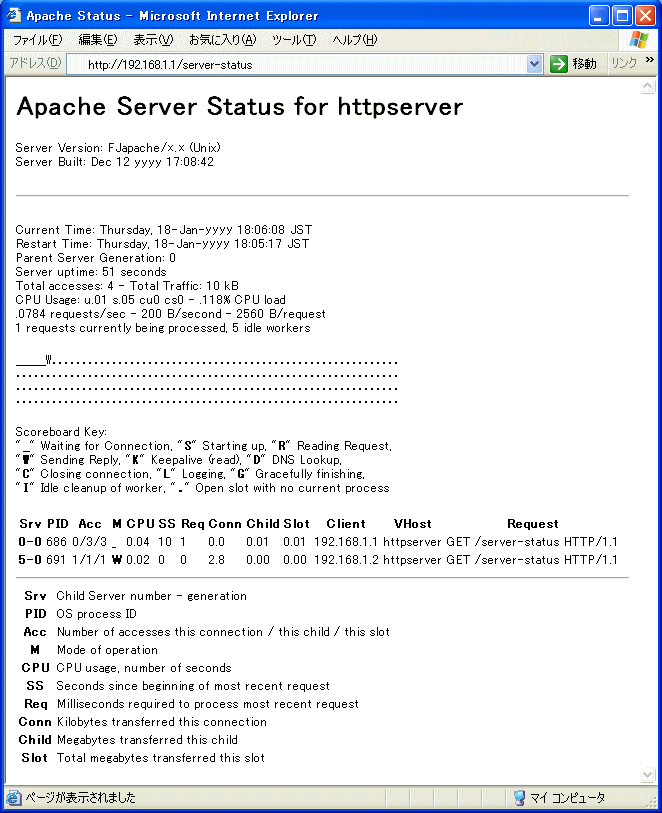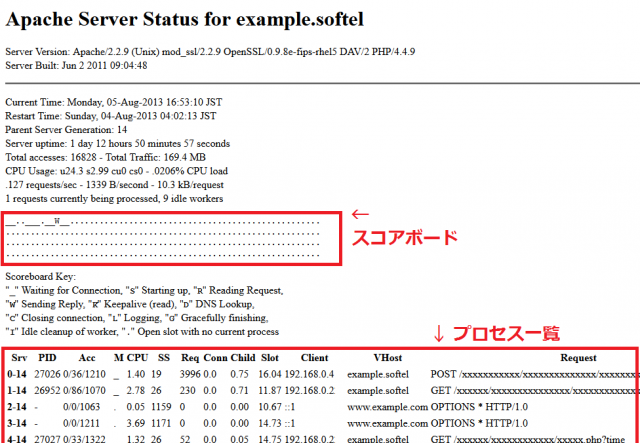Apache Status Open Slot With No Current Process
- Apache Status Open Slot With No Current Process Machine
- Apache Status Open Slot With No Current Process Free
- Apache Status Open Slot With No Current Process Form
Las vegas slot machines jackpots. Number of accesses this connection / this child / this slot M: Mode of operation CPU: CPU usage, number of seconds SS: Seconds since beginning of most recent request Req: Milliseconds required to process most recent request Conn: Kilobytes transferred this connection Child: Megabytes transferred this child Slot: Total megabytes transferred this.
Apache is a world’s most popular, cross platform HTTP web server that is commonly used in Linux and Unix platforms to deploy and run web applications or websites. Importantly, it’s easy to install and has a simple configuration as well.
- Jul 22, 2014 I am experiencing the most bizarre thing that so far I am unable to reproduce with my own visits to the site. After restarting Apache2 my cacti graphs show that the child processes increment consistently over the course of a day without dropping back down during off hours.
- Sep 05, 2017 Apache is a world’s most popular, cross platform HTTP web server that is commonly used in Linux and Unix platforms to deploy and run web applications or websites. Importantly, it’s easy to install and has a simple configuration as well. Ps is a utility which shows information concerning a.
- In apache server-status page,referring to the 'Acc' column, which is the 'Number of accesses this connection / this child / this slot'. For example 18/256/356, I will expect that all values are equal. I need an explanation of what is meant by child and slot connection with examples.
- Apache Monitoring using modstatus (server-status)., 'C' Closing connection, 'L' Logging, 'G' Gracefully finishing, 'I' Idle cleanup of worker, '.' Open slot with no current process. We have 8 servers spawned, with 7 of them idle. In total, there are 256 slots. You can now monitor the status of the Apache server to see if your.
- SSL/TLS Session Cache Status: cache type: SHMCB, shared memory: 512000 bytes, current entries: 6 subcaches: 32, indexes per subcache: 88 time left on oldest entries' objects: avg: 128 seconds, (range: 56.245) index usage: 0%, cache usage: 0% total entries stored since starting: 1853 total entries replaced since starting: 0 total entries expired since starting: 1847.
Read Also: How to Hide Apache Version Number and Other Sensitive Info
In this article, we will show how to check Apache web server uptime on a Linux system using different methods/commands explained below.
1. Systemctl Utility
Systemctl is a utility for controlling the systemd system and service manager; it is used it to start, restart, stop services and beyond. The systemctl status sub-command, as the name states is used to view the status of a service, you can use it for the above purpose like so:
2. Apachectl Utilities
Apachectl is a control interface for Apache HTTP server. This method requires the mod_status (which displays info about the server is performing including its uptime) module installed and enabled (which is the default setting).
On Debian/Ubuntu

Apache Status Open Slot With No Current Process Machine
The server-status component is enabled by default using the file /etc/apache2/mods-enabled/status.conf.

Apache Mod_Status Configuration
On RHEL/CentOS
To enable server-status component, create a file below.
and add the following configuration.
Save the file and close it. Then restart the web server.
If you are primarily using a terminal, then you also need a command line web browser such as lynx or links.
Then run the command below to check the Apache service uptime:
Alternatively, use the URL below to view the Apache web server status information from a graphical web browser:
Apache Status Open Slot With No Current Process Free
3. ps Utility
ps is a utility which shows information concerning a selection of the active processes running on a Linux system, you can use it with grep command to check Apache service uptime as follows.
Here, the flag:
-e– enables selection of every processes on the system.-o– is used to specify output (comm – command, etime – process execution time and user – process owner).
The sample output below shows that apache2 service has been running for 4 hours, 10 minutes and 28 seconds (only consider the one started by root).
Check Apache Uptime
Lastly, check out more useful Apache web server guides:
Apache Status Open Slot With No Current Process Form
In this article, we showed you three different ways to check Apache/HTTPD service uptime on a Linux system. If you have any questions or thoughts to share, do that via the comment section below.